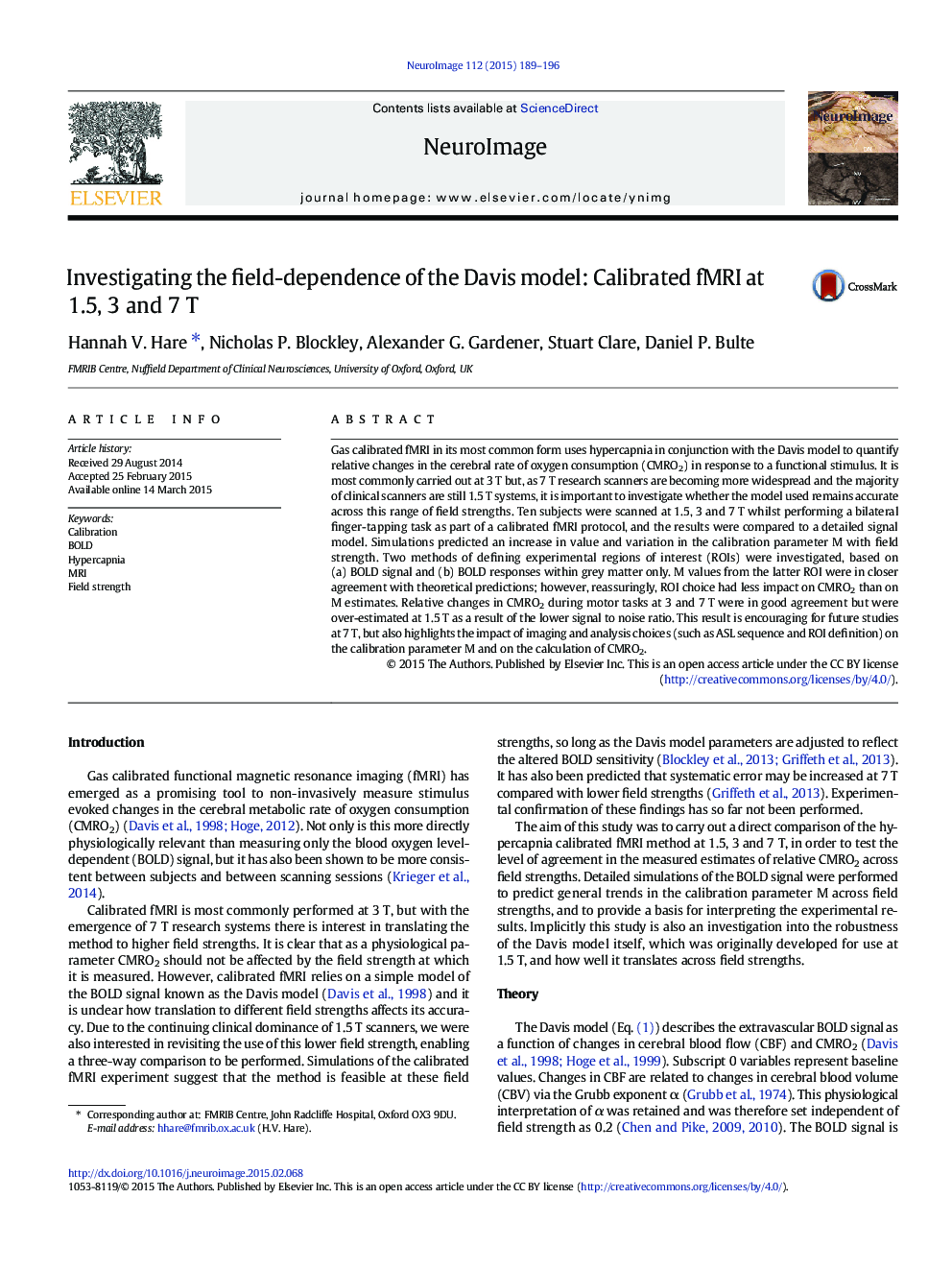| Article ID | Journal | Published Year | Pages | File Type |
|---|---|---|---|---|
| 6024952 | NeuroImage | 2015 | 8 Pages |
Abstract
Gas calibrated fMRI in its most common form uses hypercapnia in conjunction with the Davis model to quantify relative changes in the cerebral rate of oxygen consumption (CMRO2) in response to a functional stimulus. It is most commonly carried out at 3Â T but, as 7Â T research scanners are becoming more widespread and the majority of clinical scanners are still 1.5Â T systems, it is important to investigate whether the model used remains accurate across this range of field strengths. Ten subjects were scanned at 1.5, 3 and 7Â T whilst performing a bilateral finger-tapping task as part of a calibrated fMRI protocol, and the results were compared to a detailed signal model. Simulations predicted an increase in value and variation in the calibration parameter M with field strength. Two methods of defining experimental regions of interest (ROIs) were investigated, based on (a) BOLD signal and (b) BOLD responses within grey matter only. M values from the latter ROI were in closer agreement with theoretical predictions; however, reassuringly, ROI choice had less impact on CMRO2 than on M estimates. Relative changes in CMRO2 during motor tasks at 3 and 7Â T were in good agreement but were over-estimated at 1.5Â T as a result of the lower signal to noise ratio. This result is encouraging for future studies at 7Â T, but also highlights the impact of imaging and analysis choices (such as ASL sequence and ROI definition) on the calibration parameter M and on the calculation of CMRO2.
Related Topics
Life Sciences
Neuroscience
Cognitive Neuroscience
Authors
Hannah V. Hare, Nicholas P. Blockley, Alexander G. Gardener, Stuart Clare, Daniel P. Bulte,
